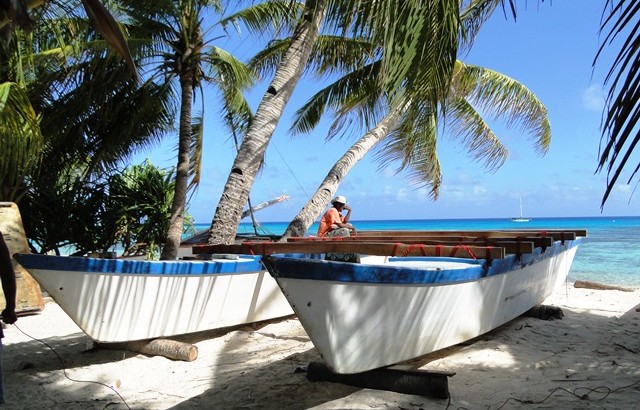Ten years ago, the Local Government of Ailuk Atoll commissioned WAM to design and build a unique style of canoe. The council had decided the atoll was in need of a workhorse that would complement the many traditional canoes that were in everyday use on the atoll.
Ailuk’s islands run along the western side of the atoll in a north-south direction, while the eastern shore is mostly just coral walls. The prevailing north-east winds make this layout of the islands perfect for reaching (sailing with the wind on the beam) between the main island of Ailuk Ailuk, the northern community of Enejelar, and the uninhabited islands in between. While these middle isles no longer have villages, they are often visited for the harvesting of coconuts for copra, which makes for a heavy load.
It was decided that a catamaran-style, double-hulled canoe could support a strong, wide platform, as well as provide double the amount of storage in the hulls. Ailuk officials approached the Embassy of the Republic of China (Taiwan) and was given a grant to pay for the building of the catamaran.
And so it was that the instructors and trainees in the 2004 program built the canoe, giving it a bright blue and white paint job, with contrasting red lashings.
The canoe was delivered to Ailuk, where it was immediately put to service. But, as the years slipped by, even the sturdiest of objects will succumb to the elements of a low-lying outer island. And so, in 2013, a grant was successfully sought from the Ministry of Internal Affairs and a team was chosen to do a refit of the catamaran. The RMI National Training Council also assisted with funding for the project.
Team leader of the refit was Rice Snight, a champion canoe sailor, who over the years has often come to Majuro to compete in the annual National Cup. The refit took a number of months, but by early 2014 was back in action on Ailuk’s lagoon.

